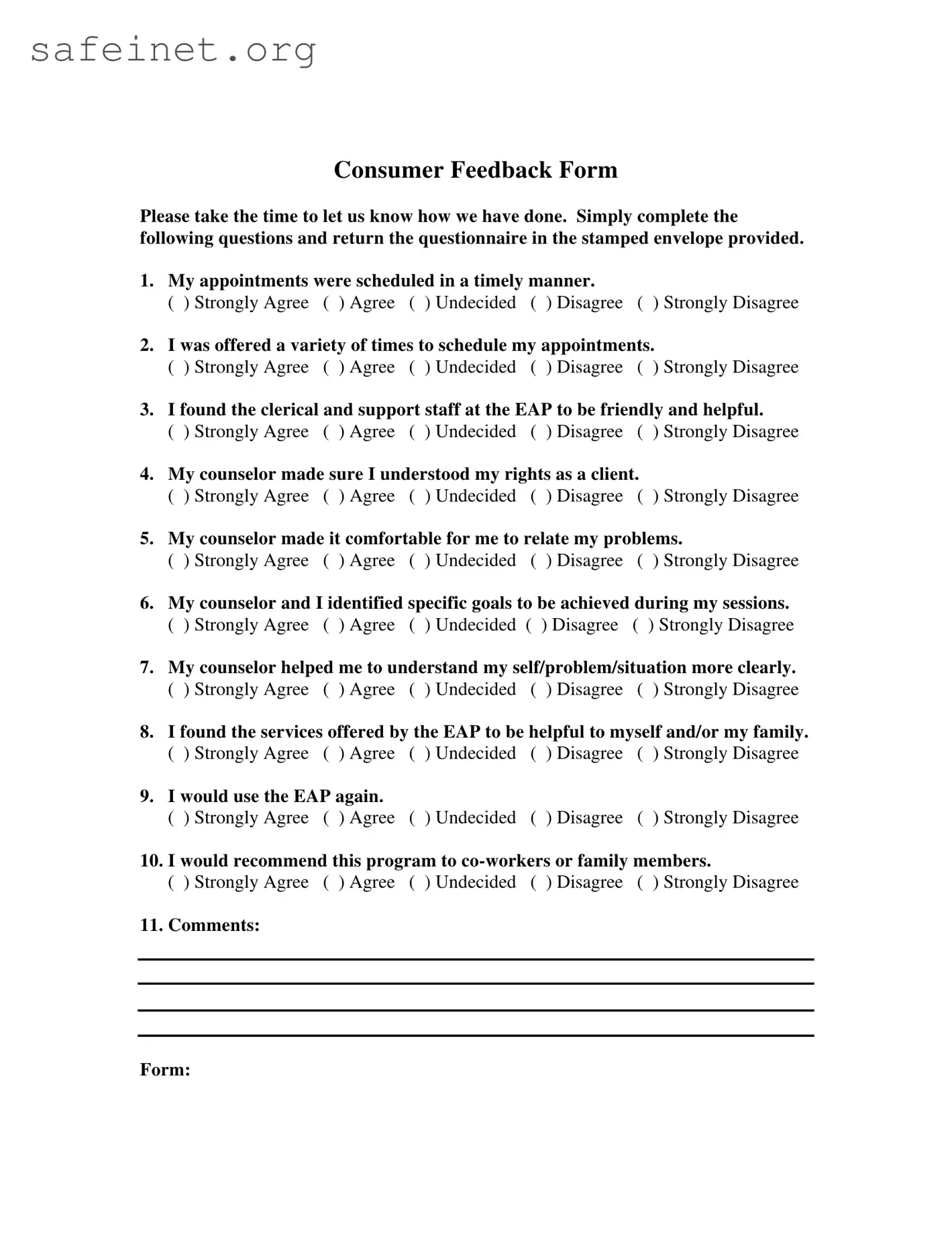What is the purpose of the Client Feedback Form?
The Client Feedback Form is designed to gather insights about your experience with the services provided by the Employee Assistance Program (EAP). Your feedback helps us understand what we are doing well and where improvements may be needed, ensuring that we can better meet your needs in the future.
How should I fill out the form?
Please read each statement carefully and indicate your level of agreement by selecting one of the options: Strongly Agree, Agree, Undecided, Disagree, or Strongly Disagree. For the last question, feel free to share any additional comments or insights you think may be helpful. Your responses can significantly enhance our service quality.
Is my feedback anonymous?
Yes, your feedback is anonymous. We ensure that all responses remain confidential. Your identity will not be associated with your feedback, allowing you to provide honest opinions without concern.
Why is it important to share my feedback?
Sharing your feedback is essential for our continuous improvement. It helps us understand your experiences, assess the effectiveness of our services, and identify areas where we can enhance support. Without your insights, we would miss valuable information that guides our program's growth.
What if I had a negative experience?
If you had a negative experience, we encourage you to share your thoughts in detail on the form. Constructive criticism is invaluable in helping us address concerns and improve our services. Your feedback will be carefully reviewed, and we will work on making necessary adjustments based on your insights.
How does the EAP use my feedback?
Your feedback is analyzed to inform our staff training, service delivery, and program development. By identifying patterns and common concerns, we can make informed decisions that improve the overall client experience and ensure we are meeting the needs of those we serve.
Can I request a follow-up regarding my feedback?
Yes, if you would like a follow-up regarding your feedback, please indicate this on the form. While we cannot address individual concerns on a personal basis due to our commitment to anonymity, we appreciate knowing when clients desire additional communication or support.
What should I do if I don’t receive a stamped envelope to return the form?
If you did not receive a stamped envelope with your Client Feedback Form, please reach out to our office. We can provide a way for you to submit your feedback without any hassle. Your opinions are important, and we want to ensure you can share them easily.
When should I submit the Client Feedback Form?
We encourage clients to submit the feedback form as soon as possible after their session. Timely feedback allows us to address issues quickly and improve the experience for future clients. Please return it by the deadline specified, if applicable, but also feel free to send it after your appointment if you need more time to reflect.

